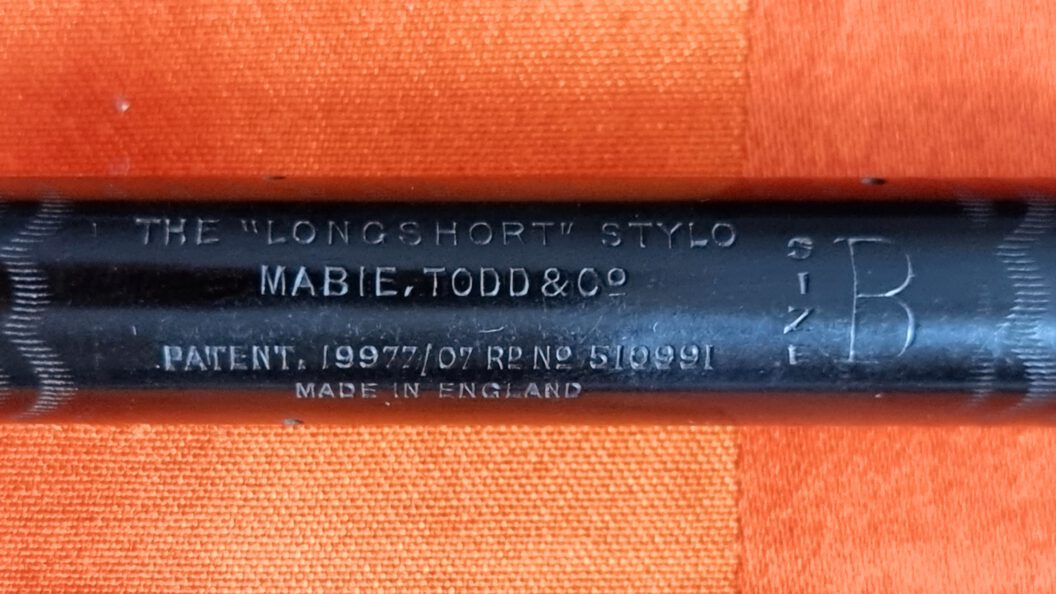TL;DR: I enjoy very much drawing with pocket pens. But how long have they been here for? In a previous post, we saw that Sailor made their first Mini at the latest in 1960. But, as it turns out, pocket pens have existed for over 100 years now. This post showcases three pocket pens, from around 1911, 1960, and 2021, so 110 years apart.
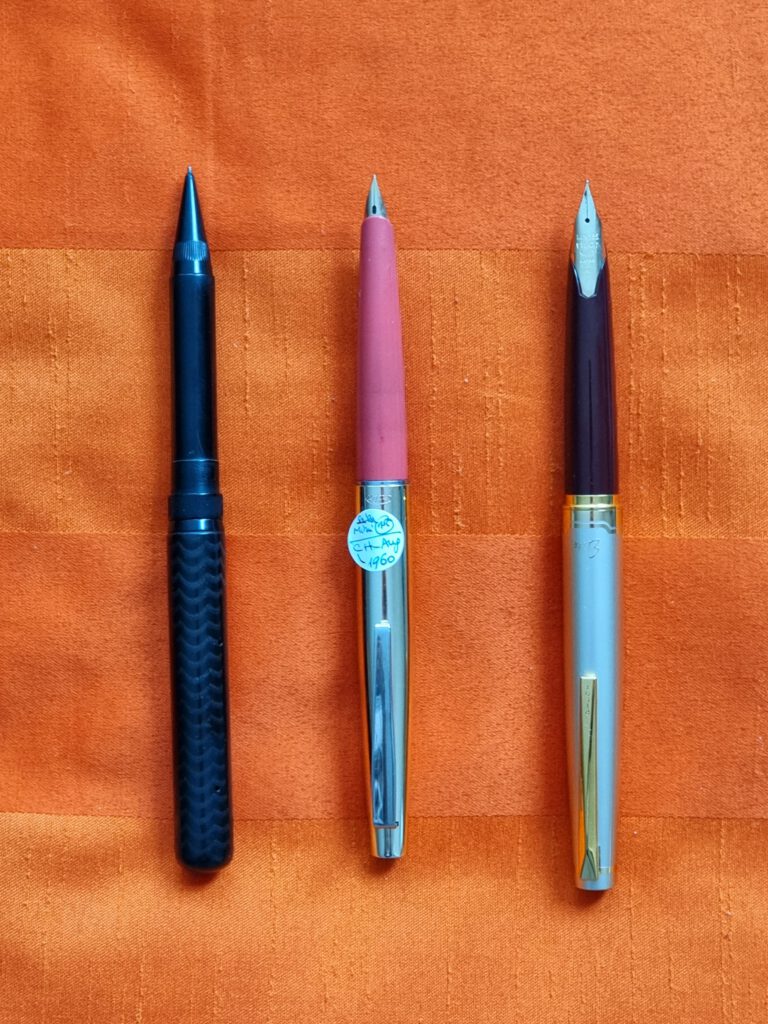
Overview: Figure 1a showcases three pens, covering about 110 years of pocket-pen making, with about 50 years between each pen’s manufacturing.

The intuition at the core of every pocket-pen design is that a long, even outsized cap, can significantly extend the length of an otherwise short pen, when posted. The longer the cap, the longer the post, so the longer the extension. The shorter the pen, while not sacrificing girth, nib size, and other ergonomics, the better the capped pen fits in the pocket. Figure 1b captures this relationship, for the three pens. Under normal circumstances, the longest extension possible with the minimal pocket size is when the cap has exactly the size of the pen, minus a bit of clearance so the nib and its tip are not damaged when closing the cap; in this case, the posted size is nearly twice the size of the capped pen. (Pilot invented in the 1960s a clever way to go around the normal circumstances, by adding a telescopic part to the pen, effectively lengthening the pen while uncapping.)
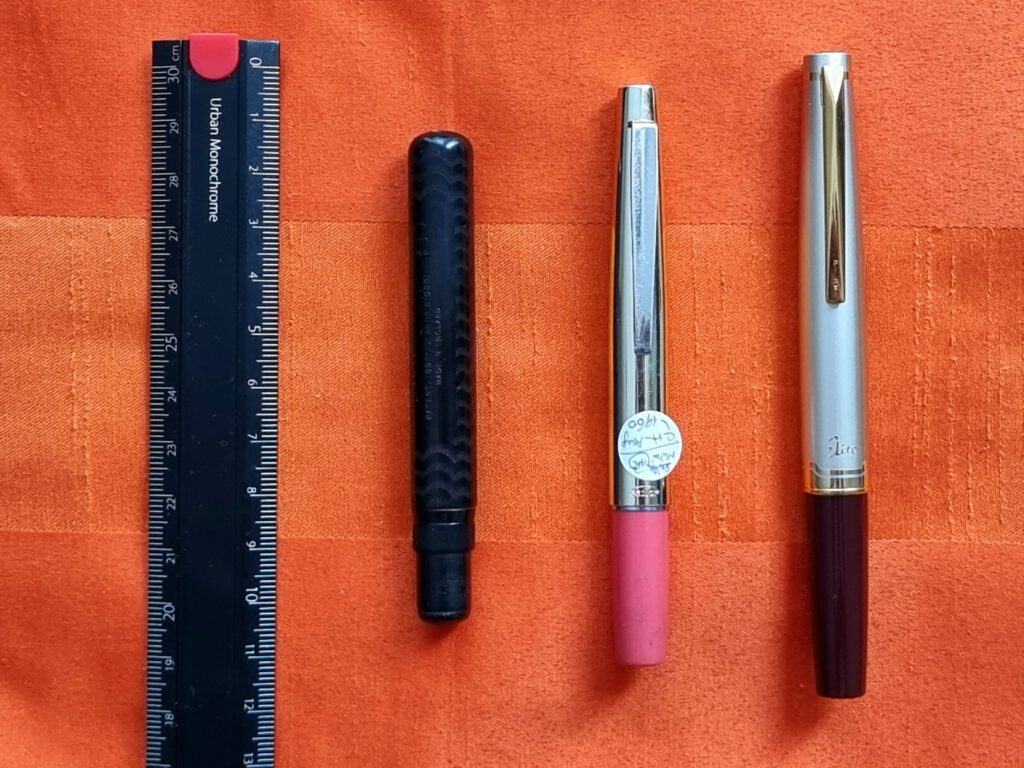
These are surprisingly well-dimensioned pens (see Figure 1c): The Mabie Todd LongShort Stylo is about 9 cm capped, the first-generation Sailor Mini is about 11 cm, and the Pilot Elite E95S is just about 12 cm. Posted, they’re all regular-, even long-sized pens, with the longest, the Pilot Elite, nearly reaching 15 cm.
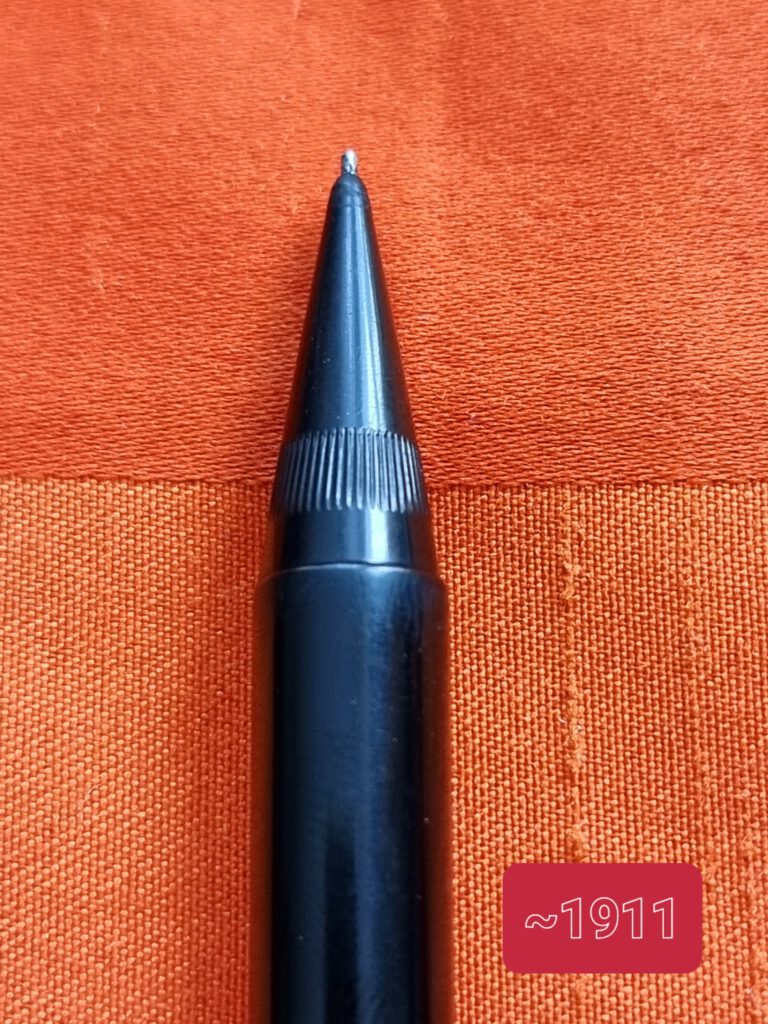
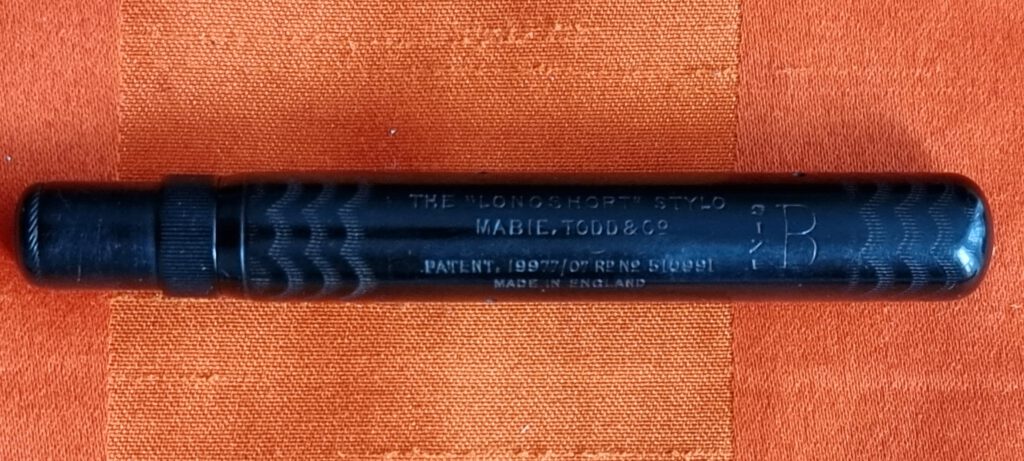
Notably, the Mabie Todd pocket pen is a LongShort stylo (see Figures 2a and 2b), that is, an eyedropper pen that uses a narrow application tube instead of a nib. The success of these pens is indicated by how they remain much in use as technical pens (think Rotring) and also, in several languages including French, pens and fountain pens are still called “stylo” (and fountain pens are “stylo plume”, or “feather pen”, in French).
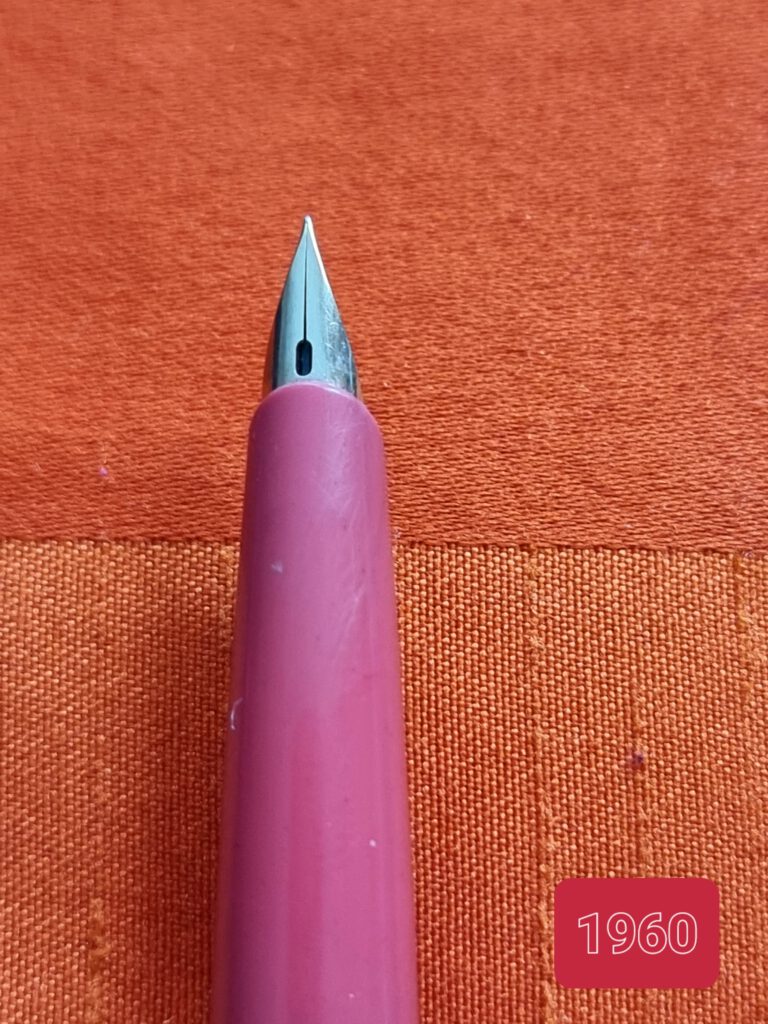

Next up, the first-generation, Sailor Mini pocket pen (see Figure 3a) marks the beginning of a revival: Japanese pocket pens will dominate the market, through innovation, manufacturing quality, and price, from the 1960s and well into the 1970s. After its introduction, which seems to be as early as 1960s based on the pen showcased here (see Figure 3b), this first-generation Sailor Mini and its immediate successors with more elegant (and cheap to manufacture) fingernail nibs will get competition from both Pilot and Platinum – still today, the “Big Three” Japanese fountain-pen makers.

Chronologically last in this group of three pens, the Pilot Elite E95S (see Figure 4) represents the revival of pocket pens among Japanese fountain-pen manufacturers. Starting with 2013, which is celebrated by the Pilot Corporation as the 95th year of existence (since 1918), the new Elite is a new delight. A popular delight. (Responding to this revival, Sailor has also reissued the Mini, and it’s possible at some point Platinum will also resume their pocket-pen line.)
… To conclude
Enjoy the day!

